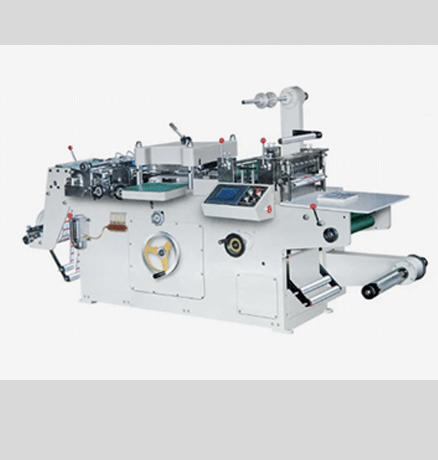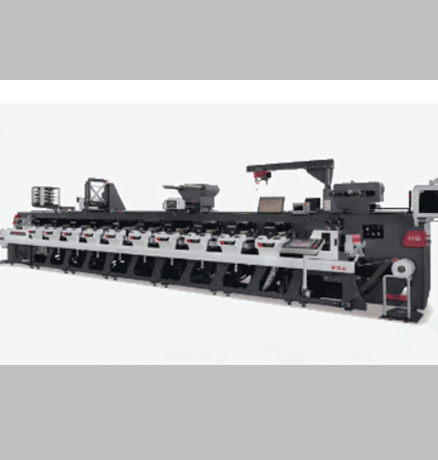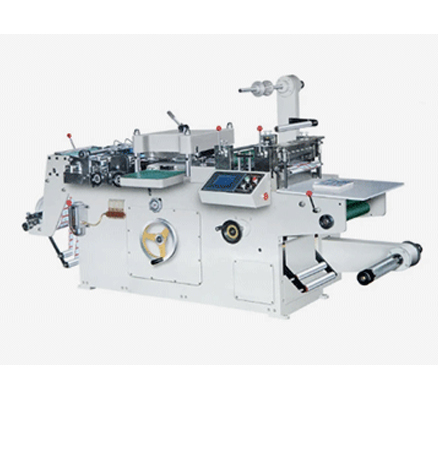In the realm of modern manufacturing and packaging, die cutting machines play a pivotal role. They are the workhorses that transform raw materials into precisely shaped products with remarkable efficiency and accuracy. This comprehensive operating guide is designed to equip both novice and experienced operators with the essential knowledge and skills to handle die cutting machines proficiently, ensuring optimal performance and high-quality output in every operation.

I. Preparations Before Operation
(1)Equipment Inspection
●Carefully examine the exterior of the die cutting machine to ensure that there is no damage, deformation, or other abnormal conditions on the machine body.
●Check whether the transmission parts, such as belts and chains, are properly tensioned and free from signs of looseness or wear.
●Confirm that the cutting tools are firmly installed and that the cutting edges are free from chips, dullness, or foreign substances.
●Inspect the electrical system, including ensuring that the power cord is properly connected, the plug is not loose, and that all the buttons and indicator lights on the control panel are in good working condition.
(2)Material Preparation
●Select appropriate materials to be die-cut according to the die-cutting task, such as paper, plastic film, leather, etc., and make sure that the quality of the materials meets the requirements and is free from wrinkles, damage, or stains.
●Prepare the corresponding die-cutting dies. The shape and size of the dies should precisely match the products to be die-cut. Also, check whether the surface of the dies is flat, smooth, and free from deformation or damage.
Work Environment Preparation
●Place the die cutting machine on a stable, dry, and well-ventilated workbench, and ensure that there is sufficient space around the machine for easy operation and maintenance.
●Clean the work area, remove any debris and obstacles that may affect the operation, and keep the environment clean.
II. Power-on and Parameter Settings
1.Power-on
Turn on the power supply of the die cutting machine and press the power switch. Wait for the equipment to conduct self-inspection and initialization. During the power-on process, pay attention to observing whether there are any abnormal noises, vibrations, or alarm messages from the equipment.
2.Parameter Settings
●Set the die-cutting speed. The die-cutting speed should be adjusted according to the properties of the materials and the sharpness of the cutting tools. For materials that are prone to deformation or tearing, a slower speed should be adopted; for materials with a harder texture and better stability, the speed can be appropriately increased. However, it should be noted that an overly high speed may affect the die-cutting precision and the stability of the equipment.
●Input the number of die-cutting times or the batch quantity so that the equipment will automatically stop after completing the set tasks.
III. Installation of Materials and Dies
♦Material Installation
Place the prepared die-cutting materials on the feeding table of the die cutting machine, ensure that the front end of the materials is flat and aligned, and adjust the position of the materials according to the guiding devices of the equipment so that they can accurately enter the die-cutting area.
Adjust the tension of the feeding device to keep the materials at an appropriate tightness during the conveying process and avoid slackening or excessive stretching.
♦Die Installation
Open the die installation part of the die cutting machine, usually by loosening the locking devices or removing the relevant protective plates.
Carefully place the selected die-cutting die on the die mounting seat, and follow the indication signs and installation requirements of the equipment to ensure that the die is correctly installed and precisely positioned. The fixing screws of the die should be tightened to prevent the die from shifting during the die-cutting process.
After the installation is completed, close the die installation part and check the firmness of the die installation again.
IV. Trial Die-cutting and Adjustment
(1.)Trial Die-cutting Operation
Before the formal die-cutting, conduct a trial die-cutting operation. Press the trial die-cutting button on the control panel to make the die cutting machine run empty for one or several times. Observe the relative movement between the cutting tools and the materials, and check whether the die can accurately die-cut the materials and whether the shape and size of the die-cut products meet the requirements.
(2.)Adjustment and Optimization
If problems such as incomplete die-cutting, uneven cutting edges, or dimensional deviations of the products are found during the trial die-cutting process, corresponding adjustments to the equipment are required. The adjustment may include fine-tuning the die-cutting pressure, adjusting the position or depth of the cutting tools, checking the feeding angle and speed of the materials, etc.
After each adjustment, conduct the trial die-cutting operation again until the die-cutting effect reaches the ideal state. During the adjustment process, small adjustments should be made step by step, and the parameters and effects of each adjustment should be recorded for future reference.
V. Formal Die-cutting and Monitoring
♦Formal Die-cutting
After confirming that the trial die-cutting results are correct, press the start button to begin the formal die-cutting operation. During the die-cutting process, the operator should closely monitor the running status of the equipment, including the movement of the cutting tools, the feeding and discharging of materials, the sounds and vibrations of the equipment, etc.
♦Quality Monitoring
Regularly check the quality of the die-cut products, take samples for measurement and visual inspection. The inspection contents include whether the shape and size of the products are accurate, whether the cutting edges are smooth and free from burrs, and whether the patterns or texts are complete and clear.
If quality problems are found, immediately stop the die-cutting operation, analyze the causes, and make adjustments. Common quality problems and solutions are as follows:
Dimensional deviation of die-cutting: Check whether the die is loose, whether the pressure is uniform, whether the material has elasticity, etc., and make corresponding adjustments or replace the materials.
Uneven cutting edges or burrs: It may be that the cutting tools are dull, so they need to be sharpened or replaced; it may also be due to insufficient or uneven pressure, so the pressure needs to be readjusted.
Indentations or scratches on the product surface: Check whether there are foreign substances on the surface of the die, whether there is friction between the material and the cutting tools, clean the die and adjust the position of the material.
VI. Power-off and Maintenance
♦Power-off Operation
When the die-cutting task is completed or the operation needs to be paused, first stop the running of the die cutting machine by pressing the stop button.
Turn off the power switch of the equipment and cut off the power supply.
♦Equipment Maintenance
Clean the working area of the die cutting machine, including removing die-cutting waste, wiping the surface of the machine body, and cleaning the dust and debris on the feeding and discharging devices.
Maintain the cutting tools, such as applying an appropriate amount of lubricating oil to prevent rusting; check the wear of the cutting tools and sharpen or replace them in a timely manner to ensure the quality and efficiency of die-cutting.
Regularly check the transmission parts of the equipment, such as belts, chains, gears, etc., add lubricating oil, adjust the tension, and ensure smooth transmission.
Check whether the wiring of the electrical system is loose, and whether the buttons and display screen on the control panel are normal. If there are any problems, repair or replace them in a timely manner.
Conduct regular comprehensive inspections and maintenance of the die cutting machine. According to the suggestions of the equipment manufacturer, formulate a maintenance plan, including equipment precision calibration, inspection and replacement of mechanical parts, etc., to extend the service life of the equipment and ensure that the equipment is always in good working condition.



GET A QUOTE